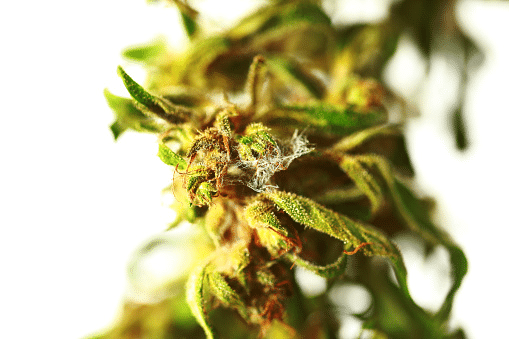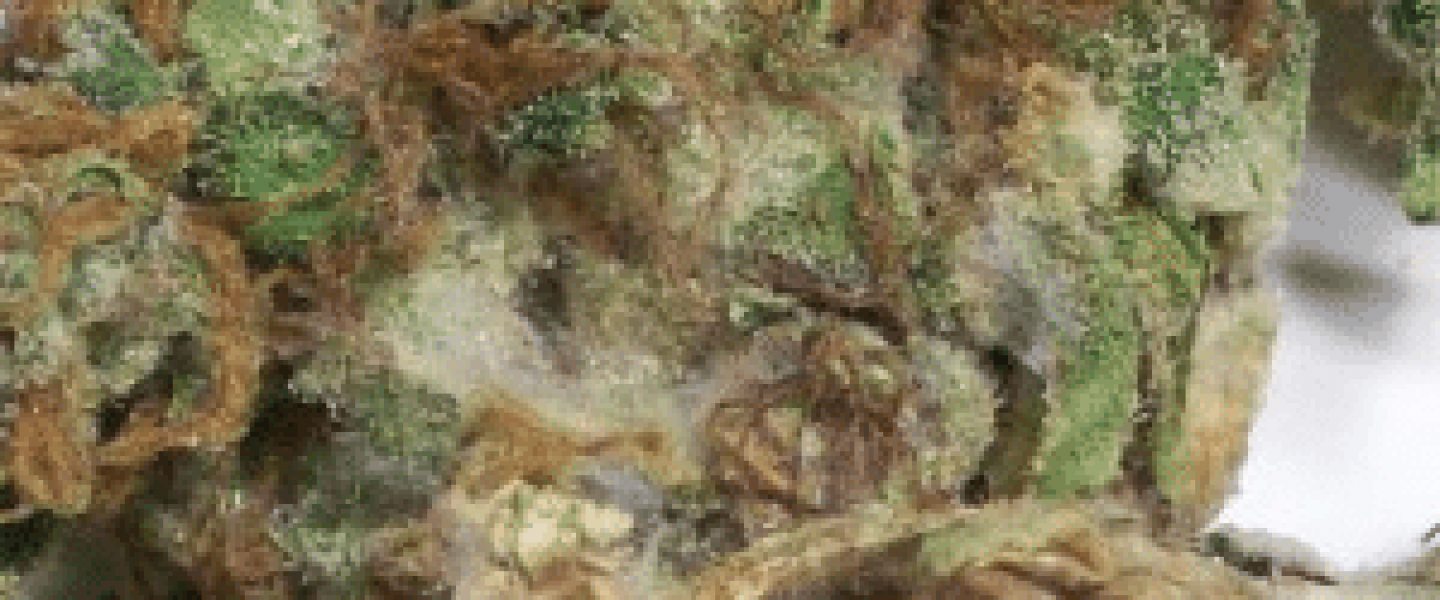Whether you cultivate medical or recreational (adult-use) cannabis, it’s crucial to prevent the development of mold on your plants at all costs. Bud rot, or (bud mold), has the potential to be incredibly devastating to any marijuana crop. It usually develops near the end of an entire season of growing healthy plants, completely ruining your buds and negating all your hard work.
What is Bud Rot?
Bud rot, also known as “marijuana mold” or “gray mold,” is a type of fungus or fungal disease that affects cannabis cultivation in certain instances. The actual fungus that causes bud rot is called Botrytis cinerea, and, like all fungi, it thrives in cool and humid climates. Thus, monitoring and adjusting temperature and humidity levels is the most important factor in preventing bud rot, or other types of mold on pot plants.
Cannabis bud rot can occur anywhere and anytime on your marijuana plants, even before they begin flowering. Bud rot starts growing on the inside of your buds, making it particularly difficult to manage. Once you notice the mold on the outside of your marijuana plants’ buds, it is already too late. The bud has gone up in smoke without getting anyone high.
What Causes Bud Rot?

For bud rot to take hold, there must be some sort of physical tear in your marijuana plant’s tissue. These tears could come from training or pruning your plant, or they can come from insects. Caterpillars, snails, or worms can damage your plants enough to let bud rot inside.
Your marijuana plants won’t develop bud rot unless they are physically exposed to the fungus. While that may seem easy to prevent, it’s nearly impossible to ensure the fungal spores never come in contact with your plants. However, there are precautions you can take to lower the chances.
Preventing Bud Rot: How Do You Stop Bud Rot?
Not only does bud rot have the ability to ruin months of hard work, it can wreak havoc in a mere week or less. And, once bud rot takes hold, it can be extremely difficult, if not impossible, to eliminate. For these reasons, preventing bud rot from forming in the first place is key.
As a general rule of thumb, the temperature of your grow room should always stay above 70 degrees Fahrenheit. While there should be enough humidity for your marijuana plants to stay healthy, it should remain below 50%. This is crucial in the prevention of bud rot.
Another way to avoid bud rot is to maintain lean growth on your marijuana plants. You can train or prune your plants to preserve the proper shape without excessive density, thus allowing plenty of ventilation to permeate the foliage of your plants. Plants with densely growing leaves are more likely to develop bud rot because there is a greater opportunity for moisture to get trapped in the growth.
Appropriate watering and ventilation will also help to prevent bud rot. Make sure your marijuana plants have an adequate amount of time to dry out after watering before executing your nighttime cycle. Ensuring that air is moving across your marijuana plants will keep them dry and healthy. The key is to make sure the air is touching all parts of the plant, not just the tops. Bud rot thrives in cool, dark, moist environments. Removing these elements one-at-a-time is an effective way to reduce the risk of bud rot.
Be mindful of your clothing and gardening tools as you work in your cultivation area. It is necessary to change your clothes before going in, as clothes can provide an easy vehicle for bud mold spores. Any tools you use on your marijuana plants should be sanitized before and after use.
There are more aggressive methods of preventing the arrival of bud rot as well. You can apply bacillus subtilis spray or a sesame seed oil spray to your cannabis plants to create an additional barrier against the marijuana mold. Potassium Bicarbonate is organic and does the same job. Finally, copper soap and copper spray are also available and can be used throughout your plants’ lives. WIth this method, you’ll also want to spray your plants with sulfur, so the treatment takes to the air and spreads.
Treating Bud Rot: How to Get Rid of Mold on Weed
If you’re concerned bud rot is growing on any of your cannabis plants, remove the suspected plants immediately. Losing one plant to protect the others is well worth the effort. However, don’t add plants with bud rot to the compost pile, as this will spread the mold far and wide. Seal the plants in a plastic bag and discard it instead.
Avoid using fungicide on your cannabis plants during their flowering stage. This could have a detrimental effect on the flavor and aroma of your buds. If you discover any marijuana mold in your cultivation site, make appropriate temperature and/or humidity modifications to preclude environmental conditions suitable for mold growth.
Bud Rot Signs: What Does Bud Rot Look Like?
You can observe bud rot under a microscope, but it’s crucial to monitor your marijuana plants’ leaves as the growing cycle progresses to prevent crop devastation. If your plants have a burnt, browning look around the edges of their leaves, these are likely bud rot signs. These leaves will eventually turn dark and purple altogether and may start growing spots. However, the leaves could simply grow abnormally as well. If you see anything strange developing on your plants’ leaves, be sure to take a closer examination.
Bud Rot After Harvest
Smoking bud rot is not advisable in any way. Therefore, it is imperative to frequently make observations of your marijuana plants to prevent surprises of bud rot after harvest. If you discover odd, white, gray, or black colors and a slimy, mushy consistency in your buds after harvest, it’s time for disposal.
How to Stop Bud Rot When Drying
- If you can, harvest after a dry period.
- As you harvest, inspect each plant’s cola for bud rot.
- Remove fan leaves, and trim your buds before drying.
- Space out your marijuana branches while they dry.
- Keep humidity at 50% and temperature above 70° Fahrenheit.
- Decrease drying time if you’re finding mold in harvested buds.
Can Moldy Buds be Saved?
Moldy buds can be saved, but this would be an incredibly long and arduous process involving water curing of individual buds. This would not be practical for a harvest with significant bud yields. Prevention is key with regards to moldy buds.
Can You Cut Out Bud Rot?
It is possible to cut out bud rot. Some cultivators manage to prune the mold-affected parts of their cannabis plant successfully, and the rest of the plant continues living. But, utilizing such pruning methods does not guarantee survival of moldy marijuana plants.
Remain vigilant with regular inspections of your cannabis plants throughout the cultivation process to prevent the emergence of bud rot. Always remember: prevention is paramount. If you encounter other problems or have questions, peruse The Weed Blog website for the latest information and resources regarding cannabis cultivation and legalization.









